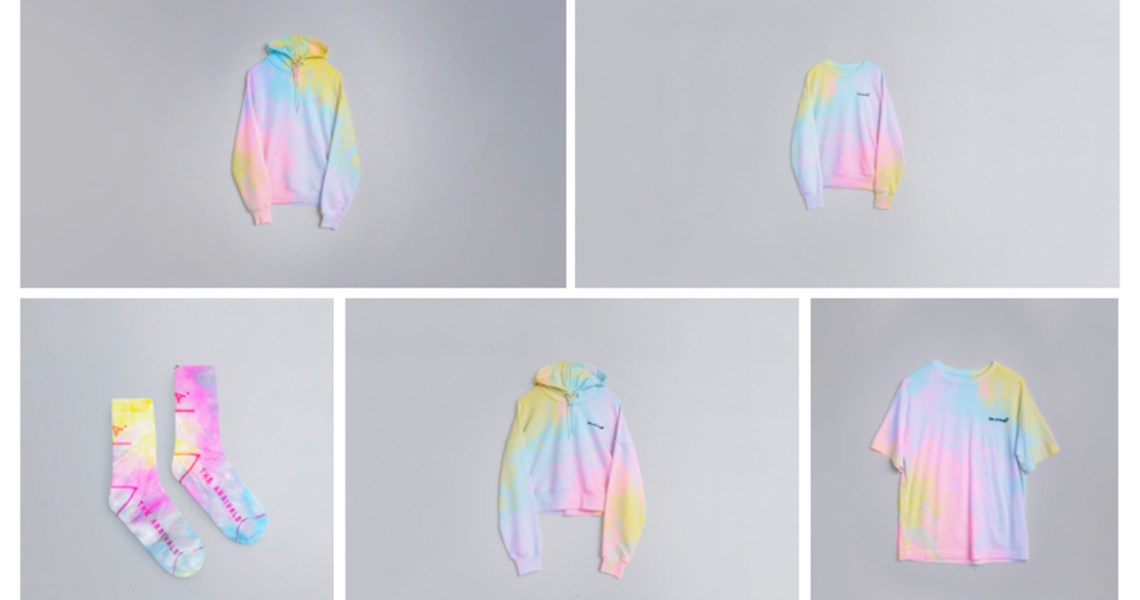On Monday, DTC fashion brand The Arrivals dropped a collection of tie-dyed T-shirts in its first attempt at selling a collection through Instagram.
Titled “Love is Love,” the collection originally served as a limited giveaway tied to Pride Month in June. The Arrivals took six shirts from its SoftWear line, which is a collection geared toward transitional weather, tie-dyed them and gave them away through an Instagram promotion. The response was so positive, with hundreds of comments on the initial Instagram post entering to win, that the brand immediately followed up the giveaway with plans to do a full collection of the tie-dyed shirts and decided to sell them exclusively through Instagram, where it has cultivated a community of more than 100,000 followers.
“It’s about meeting the customer wherever they are,” said David Hauser, general manager at The Arrivals. “We really want to make sure we are fostering the communication channels. The collection wasn’t sold anywhere other than Instagram, so we could reward those customers who are a part of our community there. We wanted to offer it to them first and build up that channel for us.”
The collection’s tees and hoodies sold for $30 to $150. The Arrivals promoted it primarily through its Instagram account, but also in emails, which Hauser said play a significant role in the brand’s marketing plans.
Based on the reception to the sale — the collection sold out within the first 12 hours of the intended 24-hour window — Hauser said The Arrivals would explore making Instagram commerce a bigger part of the brand’s business model. This was the brand’s first time selling through Instagram. Rather than invest a lot of time into building an official Instagram storefront without knowing if it would be successful, sales of the collection were facilitated entirely through Instagram direct message.
Customers were asked to send a message to The Arrivals’ Instagram account, stating they wanted to order a shirt. The rest of the transaction was conducted personally through email by the brand’s sales team. For “V2,” assuming there is a second iteration, Hauser said the brand will create links to a curated landing page from its Instagram account, which will then take people to the checkout page. For its part, Instagram has worked to make selling through the platform easier this year with dedicated commerce platforms.
This collection is part of The Arrivals’ overall approach to experimenting with sales channels, which Hauser said was a critical part of the brand’s success. Every production cycle, or every few months, The Arrivals sets aside a small amount of product to experiment with. The shirts being sold through Instagram were all produced for the SoftWear line, but were repurposed for the Instagram experiment.
Ad position: web_incontent_pos1
“Whenever we go into production, we think about innovation and special projects, unique activations — anything we can use [a product] for to experiment,” Hauser said. “It’s uncommon for brands to do that. People usually want to sell through their entire stock. But we are a fashion company that operates like a tech company, so we are always trying to experiment and innovate. It’s super dynamic to have product set aside, and we can always put it back into regular circulation.”
Hauser said experimentation is critical for the brand, but at the same time, a smaller digitally native brand does not always have the resources needed to take a big gamble. For example, when The Arrivals first struck a deal with Nordstrom to sell in-store, the retailer allegedly asked for them to sell in 40 stores, with The Arrivals deciding instead to sell in just six. Using existing product to do small-scale experiments is the brand’s go-to move. Other examples of this include the brand setting aside a certain number of The Arrivals’ layering pieces, which tend to be popular among corporate employees, and attempting to sell them directly to the large companies to distribute to their employees.
“In an increasingly competitive retail environment. Smaller DTC brands have to leverage unorthodox methods to capture the attention of shoppers exposed to a multitude of labels and products every day,” said Krista Corrigan, retail analyst at Edited. “Platforms such as Instagram allow for these smaller labels to not only cast a wider net geographically, but to be more intentional with who they’re targeting. This type of testing ground also mitigates the investment risk for the brand while still creating a buzz among consumers. Any opportunity for innovation is imperative for an up-and-coming brand to differentiate themselves in an oversaturated retail market.”




